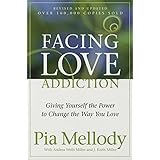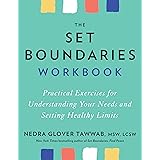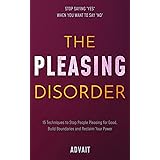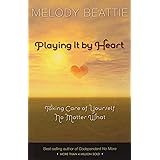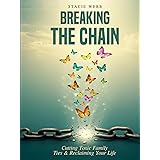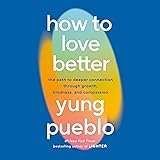Have you ever wondered if your “retail therapy” might be crossing a line into something more serious? The distinction between a harmless treat and a concerning habit can often be subtle, yet its impact on one’s life can be profound. In the accompanying video, The Chrissy B Show delves into the complex issue of shopping addiction, also known as compulsive buying disorder or oniomania, shedding light on its definition, psychological underpinnings, and pathways to recovery. This article expands upon the insights shared, providing a more in-depth exploration of this often-understated problem.
Understanding Compulsive Buying Disorder (Oniomania)
The term “addiction” is frequently associated with substances like drugs or alcohol. However, as the NHS Choices website defines it, addiction is fundamentally about lacking control over an activity, substance, or usage to the point where it becomes harmful. This broad definition indeed encompasses behaviors such as workaholism, internet addiction, and significantly, shopping addiction.
Compulsive buying disorder, or oniomania, transcends the occasional splurge. It is characterized by an irresistible urge to buy, which often leads to distress, financial hardship, and relationship issues. While currently categorized by experts as an impulse control disorder rather than a substance addiction in manuals like the Diagnostic and Statistical Manual (DSM), its behavioral patterns mirror many aspects of other recognized addictions. Dr. Audrey Tang, a psychologist featured in the video, outlines four distinct stages: anticipation, preparation, shopping, and a reflective phase often marked by guilt and depression. This cyclical pattern underscores the addictive nature of the behavior, even if the “substance” is a new pair of shoes.
The core difference between healthy “retail therapy” and compulsive buying lies in control and consequence. Retail therapy involves conscious, adaptive behavior, perhaps a well-deserved treat after an achievement, and it generally brings sustained satisfaction. Conversely, oniomania is driven by an intense compulsion, where the act of acquiring provides a temporary “buzz” or escape, swiftly followed by feelings of remorse, shame, or despair. When shopping transitions from a mood lifter to a mood regulator, where its absence creates anxiety, a problematic pattern has likely begun.
The Psychological Roots of Excessive Spending
Why do some individuals develop a shopping addiction while others do not? The causes are complex and multi-faceted, often stemming from a bio-psychosocial framework. This means a combination of biological predispositions, psychological vulnerabilities, and social or environmental factors contribute to the development of the disorder.
Emotional Triggers and Coping Mechanisms
-
Grief and Loss: As shared by Serena Loderick in the video, her shopping addiction began after the sudden and traumatic loss of her grandmother. For Serena, buying items became a tangible way to fill an emotional void and distract herself from profound sadness and emptiness. This illustrates how shopping can become a maladaptive coping mechanism for grief that cannot be processed in other ways.
-
Depression and Stress: Both Emma Sims and the unnamed woman who accumulated £20,000 in debt mentioned suffering from depression. For many, shopping provides a temporary uplift, a “thrill” that can mask underlying feelings of sadness, anxiety, or inadequacy. The dopamine receptors in the brain, responsible for pleasure and reward, can become hypersensitive to the thrill of a purchase, creating a cycle where shopping becomes the primary (and often only) perceived route to feeling better.
-
Escape and Distraction: The act of browsing, trying on, and buying offers a temporary escape from daily stresses or deeper psychological issues. It shifts focus from internal pain to external gratification, albeit fleetingly.
Learned Behavior and Societal Influences
-
Upbringing: Emma Sims’s story reveals a pattern of her mother using shopping as a reward during her teenage years. Such experiences can inadvertently teach individuals that material possessions are directly linked to self-worth or happiness, laying a foundation for compulsive buying disorder in adulthood.
-
Cultural Norms: Dr. Tang notes that women are culturally often directed towards shopping as a means of stress relief. While men can also be affected by oniomania, societal marketing and cultural expectations have historically positioned shopping as a predominantly feminine activity, influencing coping strategies.
-
Financial Independence: The disorder often emerges in the mid-20s, a period when individuals typically gain more financial autonomy. This newfound freedom, combined with existing psychological vulnerabilities, can create fertile ground for the problem to escalate.
The Devastating Impact: Real Stories, Real Debt
The video presents sobering accounts of lives derailed by shopping addiction, highlighting the severe financial and personal consequences.
-
Emma Sims’s £40,000 Debt: Emma’s passion for fashion spiraled into a colossal £40,000 debt. She reportedly spent £2,000 online monthly on clothes, many of which were worn once or never at all. The severity of her excessive spending forced her and her husband to sell their home and move in with his parents. At the time of the article mentioned in the video, they still faced another year of a stringent repayment plan managed with charity support. This case powerfully illustrates how emotional spending can lead to catastrophic consumer debt and disrupt fundamental aspects of life, such as housing and marital stability.
-
The Struggle of £5 a Week: Another woman’s story paints an equally grim picture. She accrued £20,000 in debt on credit and store cards, secretly hiding purchases from her husband. Despite a joint income of £30,000 a year, the family struggled immensely, paying £400 a month solely on minimum interest. This left them with a paltry £5 a week for groceries, forcing them to live on basic meals like pasta with tomato sauce, all while caring for a newborn. The deception was eventually exposed by debt collectors, placing immense financial strain on her marriage and highlighting the profound impact on innocent family members, especially children, who suffered consequences like making do with a second-hand console for Christmas due to the mother’s secret addiction.
-
Serena’s Two Years of Emptiness: Serena Loderick recounted her two-year struggle with shopping addiction. She typically spent “hundreds” on a single shopping spree, frequently using credit cards as a “safety net.” Her family noticed the accumulation of items, prompting her to hide new shoes and bags. Despite the temporary “high,” Serena consistently felt “rock bottom,” “low,” and “empty,” experiencing depression throughout. Her experience demonstrates how the illusion of readily available credit can deceive individuals into believing they have money, while in reality, they are accumulating significant debt and losing control over their financial independence.
These stories emphasize that the repercussions extend far beyond just monetary loss; they erode trust, strain relationships, and foster deep-seated guilt and shame within the individual.
The Unique Challenge of Recovery: You Can’t Stop Shopping
One of the most challenging aspects of recovering from compulsive buying disorder, as discussed in the video, is the inherent impossibility of avoiding shopping altogether. Unlike addictions to alcohol or nicotine, where complete abstinence from the substance is a clear goal, shopping is a necessary part of daily life. Grocery shopping, buying essential clothes, or household items are unavoidable activities.
This reality requires a different approach to recovery, focusing on developing self-control and strategic coping mechanisms within a tempting environment. It’s not about stopping shopping entirely, but rather transforming the relationship with it from one of compulsion and emotional dependency to one of rational, needs-based engagement.
Pathways to Recovery: Treatment and Practical Strategies
Fortunately, recovery from shopping addiction is entirely possible, as evidenced by Serena Loderick’s journey. The path often involves a combination of professional therapy, practical strategies, and strong support systems.
Therapeutic Approaches
-
Cognitive Behavioral Therapy (CBT): Dr. Tang suggests CBT as a primary treatment. This therapy challenges the distorted thoughts and associations linked to shopping (e.g., “shopping will make me happy”). It helps individuals identify triggers, reframe negative thought patterns, and develop healthier coping mechanisms. The behavioral component involves practicing these new strategies in real-world scenarios.
-
Psychoanalytical Therapy: For deeper-rooted psychological factors, psychoanalytical therapy can be highly beneficial. This approach delves into past experiences, unresolved conflicts, and unconscious motivations that might be driving the compulsive buying. By addressing the root cause, individuals can form more appropriate associations and responses.
-
Integrated Approach: Many experts, including Dr. Tang, advocate for a blended approach, combining elements of both CBT and psychoanalytical therapy. This ensures that both the immediate behavioral patterns and the underlying emotional and psychological issues are comprehensively addressed.
Practical Strategies for Managing Spending
-
Create and Stick to Lists: For unavoidable shopping, writing a detailed list and adhering strictly to it can be incredibly effective. This mirrors strategies used in managing compulsive eating, where a food diary brings awareness and control.
-
Cut Off Credit: A crucial step in managing consumer debt and breaking the cycle of excessive spending is to eliminate easy access to credit. This might involve cutting up credit cards, closing store accounts, or working with loved ones to manage finances, ensuring only necessary funds are available for purchases.
-
Seek Debt Management Advice: As soon as debt becomes apparent, it is vital to seek professional help. Organizations offering debt relief or financial counseling services can provide structured repayment plans and advice, even if it means considering more drastic measures like bankruptcy in extreme cases. The act of bringing debt into the open can be a significant step toward healing.
-
Avoid “Out-of-Area” Shopping: Research indicates that people tend to spend more when shopping outside their usual geographical radius, such as on holidays or when visiting relatives. Being mindful of this tendency can help reduce impulse purchases in unfamiliar environments.
-
Channel Energy Positively: Serena Loderick’s advice to “think before you spend” and “do something else to distract yourself” is invaluable. Engaging in new hobbies, volunteering, spending time in nature, or connecting with loved ones can provide fulfillment and positive dopamine rushes, replacing the fleeting gratification of shopping.
-
Open Communication: Secrecy fuels compulsive buying disorder. Bringing the issue into the open with trusted family members or friends, and seeking their support, can significantly alleviate the burden of guilt and provide an accountability network. Family therapy can also help heal strains and establish new communication patterns.
-
Practice Self-Forgiveness: A critical element of recovery, as highlighted by the presenter, is moving past guilt. While acknowledging harm caused to oneself and others is necessary, dwelling on guilt can impede progress and even trigger relapse. Embracing the journey of recovery and focusing on positive actions rather than past mistakes is essential for long-term well-being.


